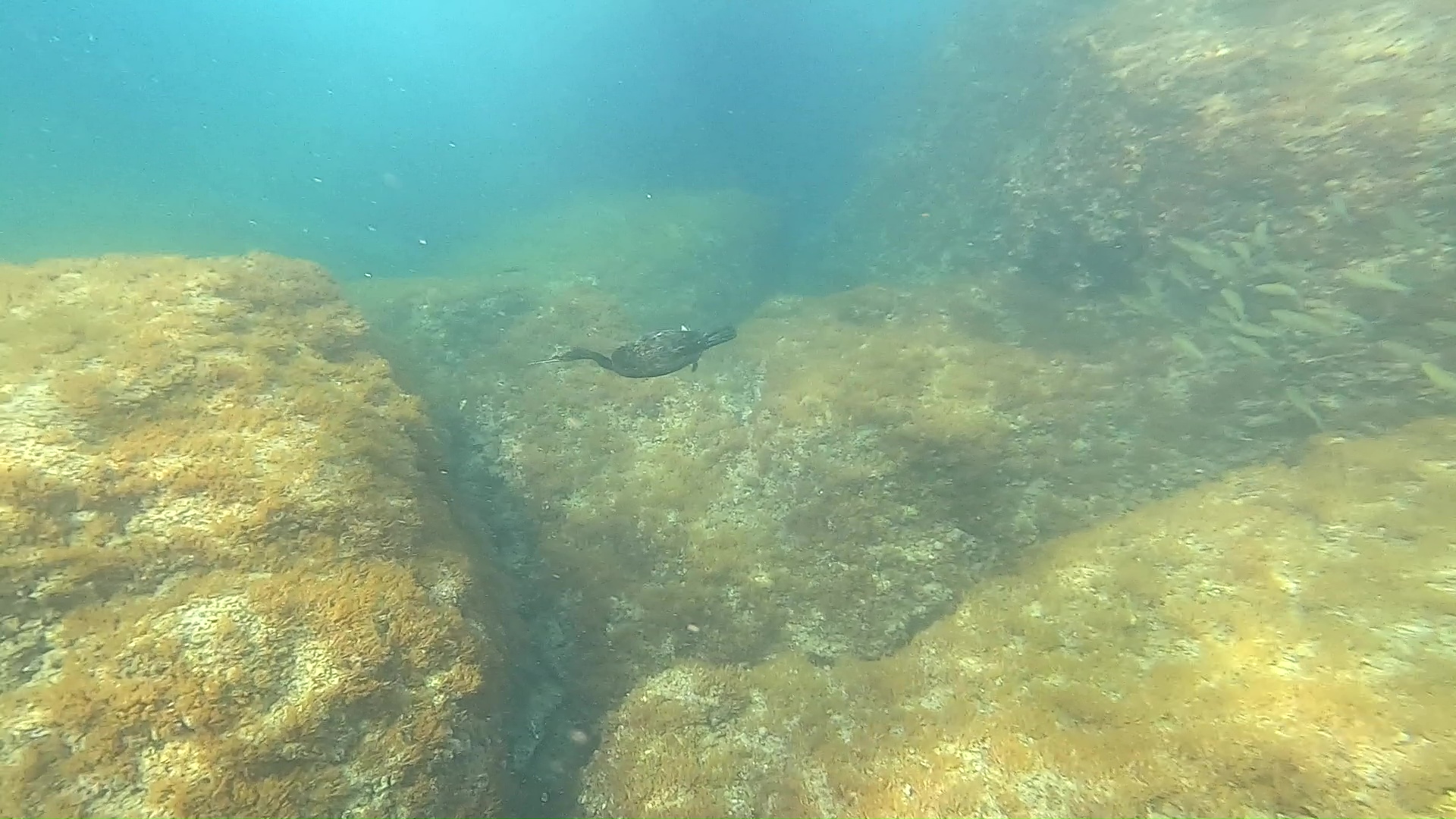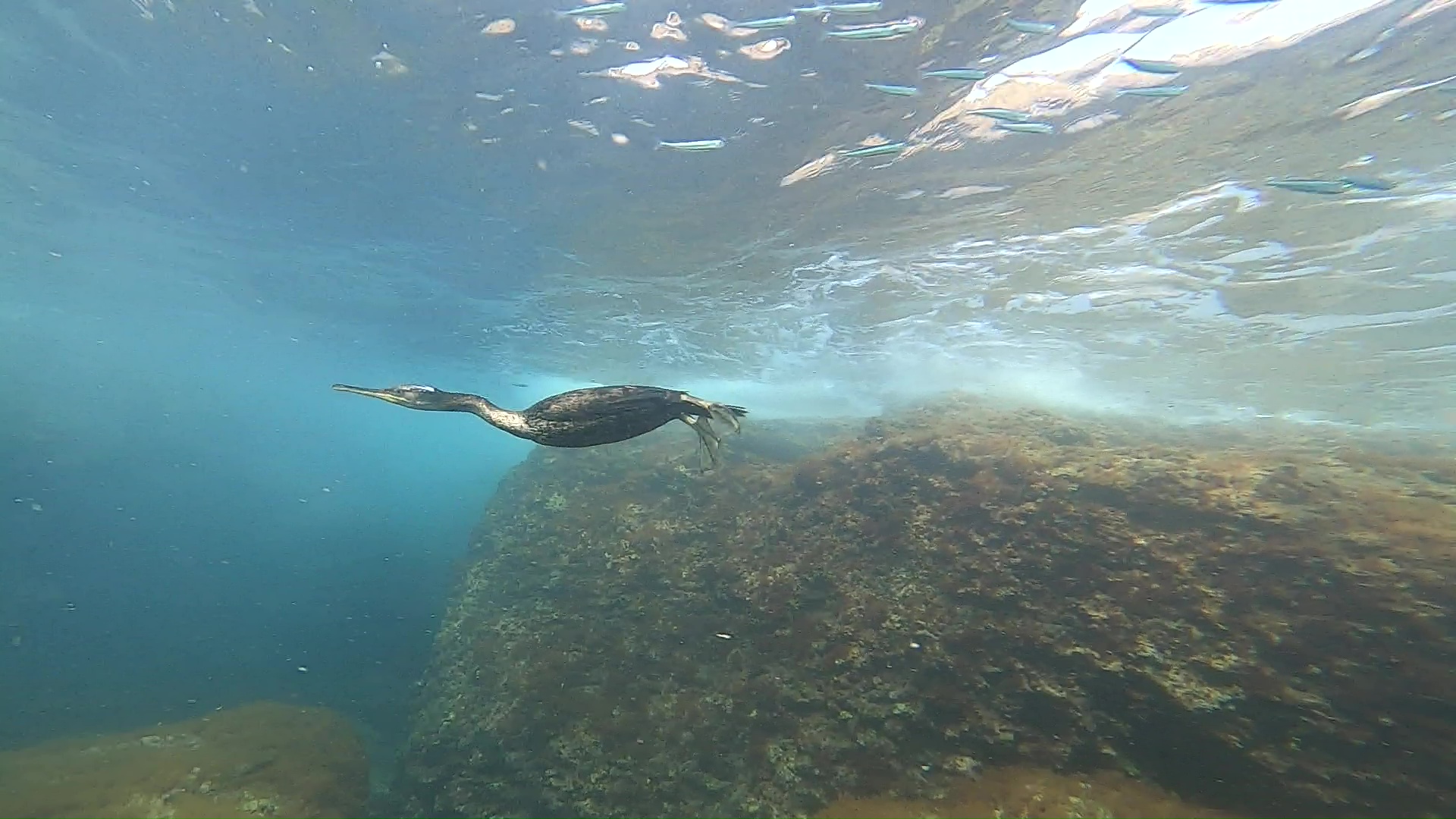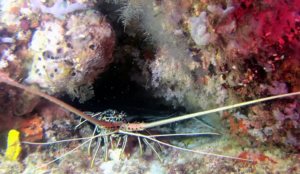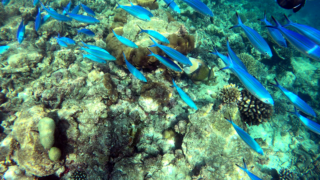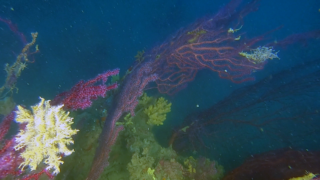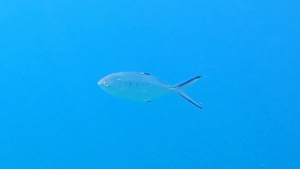Common Cormorant, Phalacrocorax carbo, is a “born freediver“. It holds the air for about a minute not so much because it is unable to, but because if it remained longer under water it would penetrate inside the plumage, thus limiting the ability to stay in apnea and therefore to feed longer.
However, he remains a formidable freediver who manages to descend to a depth of nine meters and capture the prey he eats with an elegance and efficiency that are the envy of more experienced divers.
In the video we see three cormorants fishing underwater and by pure chance we are resurrected to film their underwater action. In fact, cormorants are an extremely social species that lives in small groups and as we see it is at ease in the sea as in lakes and rivers, and manages to get along quite well both in the air and in the water!
Common cormorant is a large bird, with a dark colored head, neck and body and a sturdy hook-shaped beak.
The bronze-colored wing feathers are edged in black and create a chromatic contrast with the rest of the body; the lower plumage is almost entirely black. The adult males and females are distinguished from the young, which, in the first year of life, have the belly covered with white feathers which form a large more or less extensive spot. During the second year, this white band disappears, but they are still recognizable by the brownish color of the plumage, which begins to resemble that of adults only during the third year of life.
The moulting of adults takes place twice a year: from July (after the breeding season) to December for the tail feathers and, before nesting, from January to April for the head, neck and body feathers.
Well adapted to the aquatic environment (sea or fresh water) that provides it with most of its food, the cormorant enjoys good vision both underwater and on the surface: its eye is in fact provided with a transparent nictitating membrane (a third eyelid that moves from the inner corner over the entire eye) which acts as a diving mask allowing excellent vision. Touch and smell are, on the other hand, senses that are underdeveloped in this species.
The tapered body, the very back legs and equipped with very wide interdigital membranes guarantee it a great agility in submarine movements, which sometimes occur at great depths (up to 9 meters).
Thanks to a well-developed respiratory system, this bird can stay under water for a minute. It does not stay there any longer because the water penetrates inside the plumage, which is not very impermeable: in fact the uropigeal gland, located near the rump, which secretes a protective waterproofing oil (sebum), is atrophied. The cormorant is therefore forced to make long stops by resting on a branch, with the wings well spread to let the feathers and feathers dry. However, the permeability of the plumage is an advantage during diving: in fact, the air trapped between the beards of the feathers decreases due to humidity and therefore no longer pushes the body upwards.
The cormorant is an excellent flyer, capable of covering long distances by cutting through the air with a straight neck. The take-off from the water is instead difficult and appears clumsy due to the very backward position of the legs.
https://it.wikipedia.org/wiki/Phalacrocorax_carbo
https://en.wikipedia.org/wiki/Great_cormorant
Gallery
 English
English Italiano
Italiano

